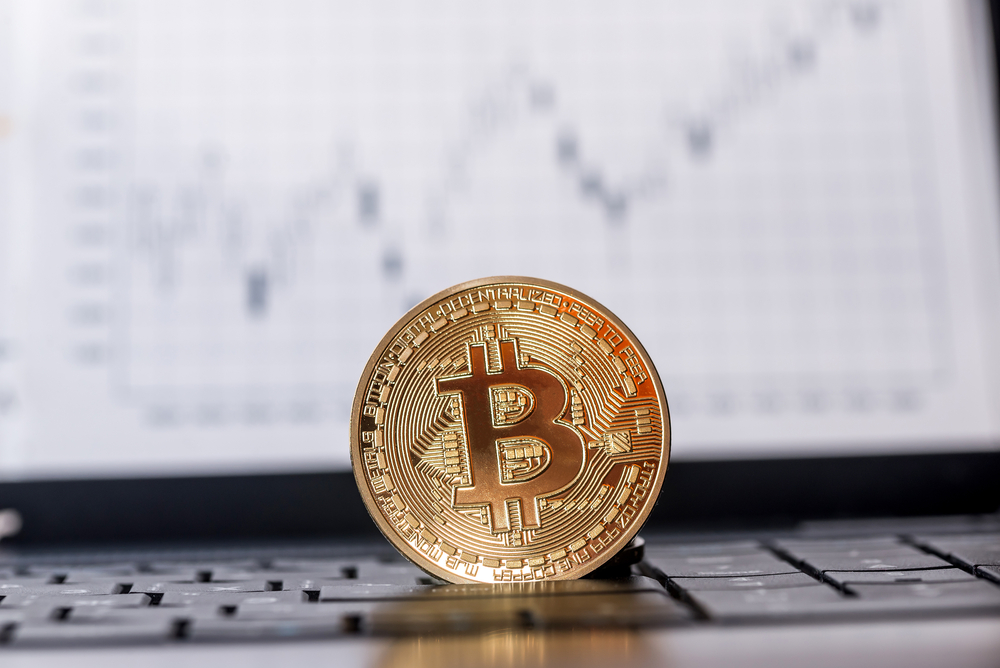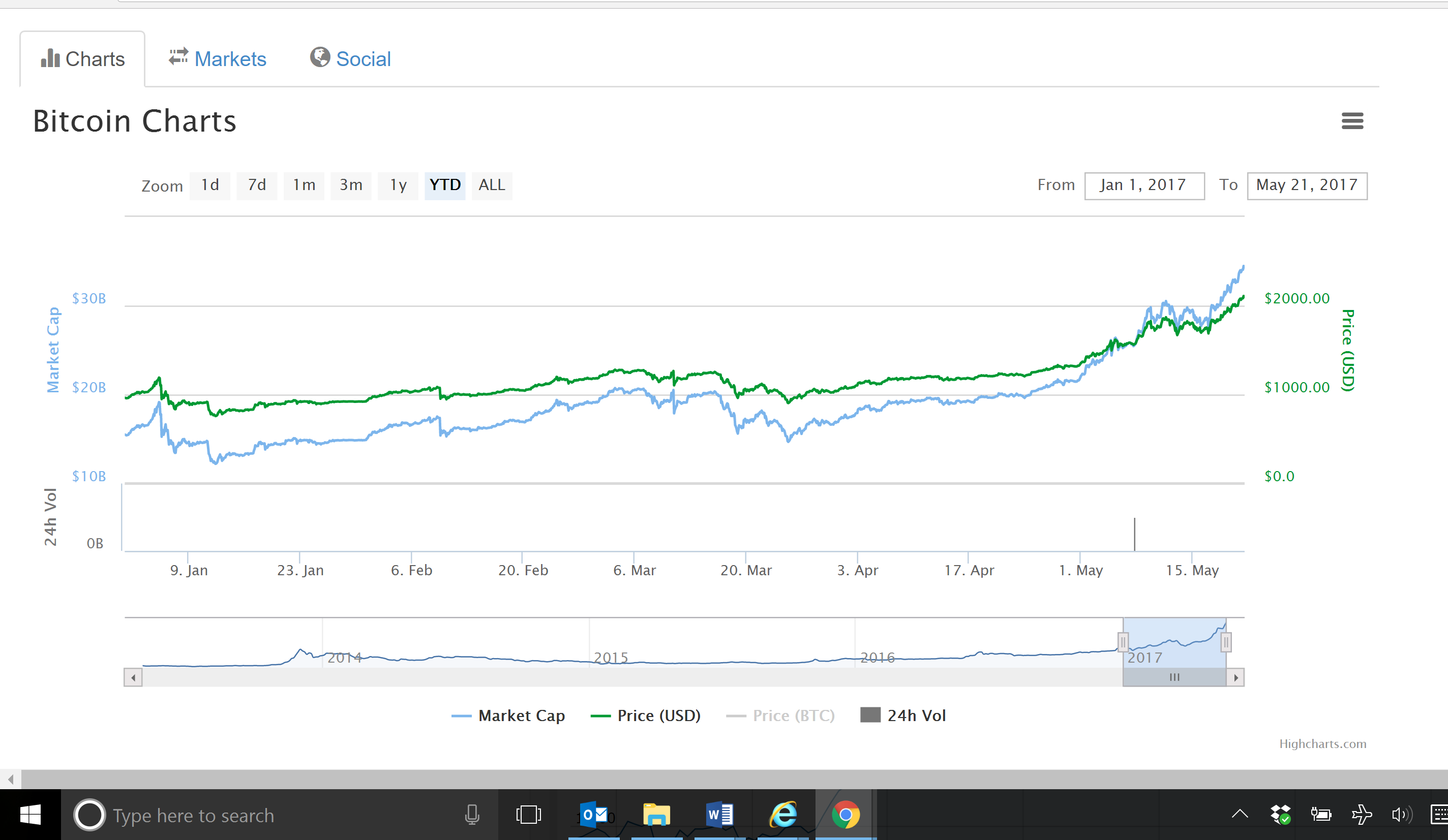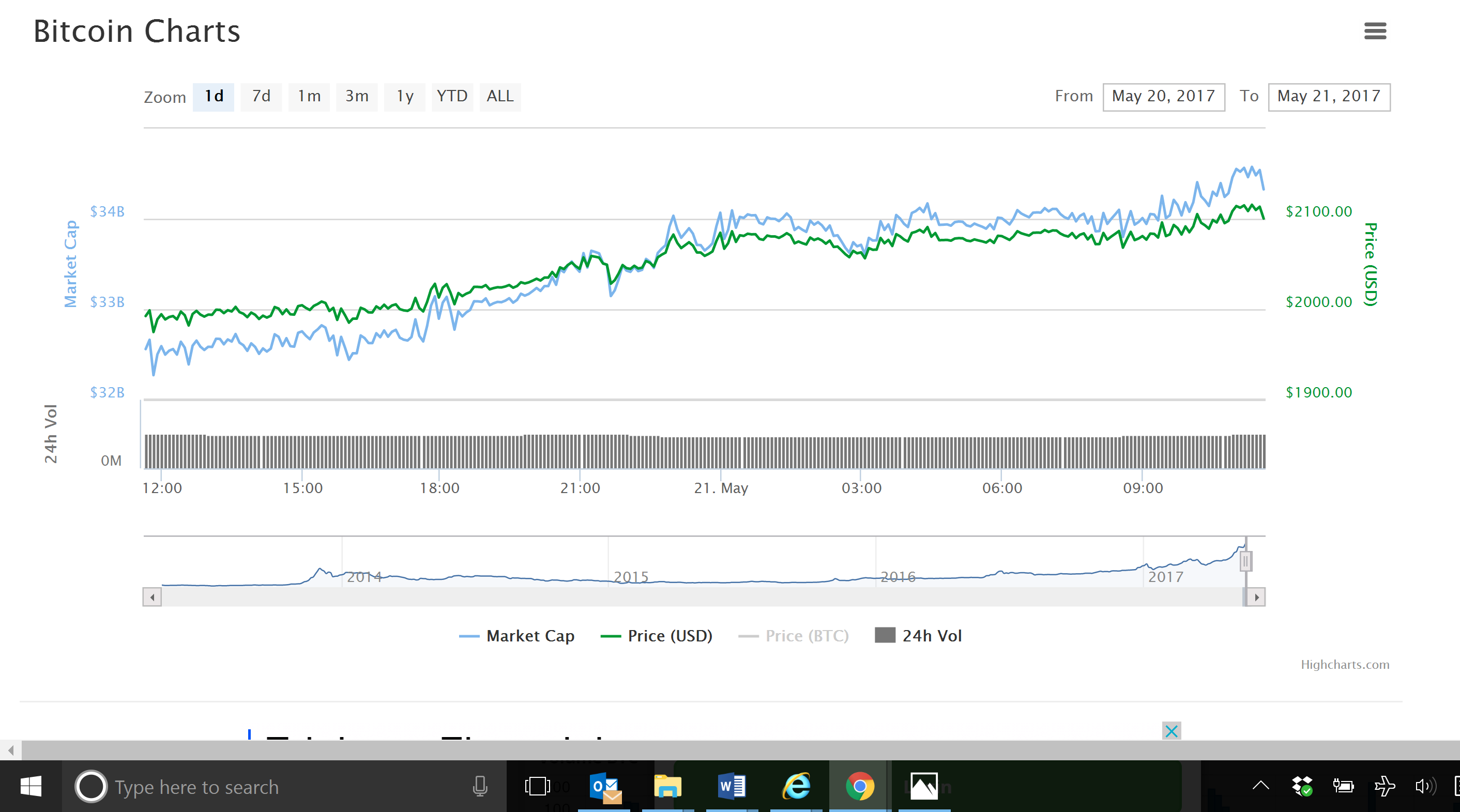Asian Trading, Falling Stocks Helps Push Bitcoin Prices Above $2,000

Rising demand for bitcoin by Chinese and Japanese investors combined with falling stocks and other factors pushed bitcoin prices past the historic $2,000 price mark Saturday.

By Sunday morning, bitcoin reached $2,103.80, marking a $34.382 billion market capitalization, with more than $1 billion trading in a 24-hour period, according to coinmarketcap.com.

Japan accounted for approximately 55% of the trading, rising beyond the 40% the country’s traders accounted for on Thursday, according to CNBC , citing data from CryptoCompare.com.
Prices on the HongKong-basedd Bitfinex exchange also jumped, closing a gap with the price’s international rate, driven by an expectation that bitcoin will be easily converted to U.S. dollars.
Asian Trading Dominates
Trading markets in Japan, China and South Korea combined for over 45% of trading volumes. Because the Japanese yen holds the largest share of bitcoin trading, it pushes the prices higher.
Charles Hayer, CryptoCompare CEO, said arbitrage among the fiat pairs moves markets in line with leading markets, and the volumes on the JPY and KRW pairs dominate trading with a joint 48% market share.
Recently passed legislation in Japan also permits retailers to accept bitcoin legally.
The gap between Chinese and U.S. exchanges for bitcoin dropped from 20% to 5% in one week, according to Chris Burniske, lead analyst at ARK Invest in a tweet Saturday.
Investors Seek Safe Havens
The price hit $1,900 on Thursday on concerns about political scandals in the U.S. and Brazil causing stock prices to fall, causing investors to seek safer assets.
U.S. stocks fell after President Donald Trump allegedly asked former FBI director James Comey to drop the investigation into Michael Flynn, the former national security advisor. The S&P 500 tumbled Wednesday in its worst day since September.
Brazilian stocks fell after its president, Michel Temer, reportedly allowed bribes in order to silence a witness in a corruption case.
The major indices recovered well after Wednesday’s slump, although the previously leading NASDAQ lagged the other benchmarks, hinting on a change in the underlying trends. European and Asian equities followed the U.S. market lower, with Japanese stocks being hit hard by the renewed safe-haven demand for the yen. The late week bounce was weak in the Nikkei, the DAX, and the EUROSTOXX 50.
The Chinese market traded sideways during the global correction, but it failed to regain its previous losses, despite being among the stronger regions globally.
Another reflection of the safety concern was the 2% rise in gold futures, which settled at $1,253.60, according to CNBC.
Also read: Bitcoin approaches $2,000, boosted by global trading and improved scalability prospects
Other Factors Drive Bitcoin Demand
Cryptocurrency conferences in New York City this week as also raised interest in bitcoin, according to some analysts. New York City conferences this coming week include Consensus 2017, Token Summit 2017 and Coinsbank Blockchain Cruise.
Bitcoin has also benefited from an alleviation of the fear that a “hard fork” will be needed – dividing bitcoin into two currencies – to improve bitcoin transaction times. A successful deployment of an alternative scaling solution indicates the hard fork that would have resulted in two separate currencies in order to speed up bitcoin transactions may not be required.
Aurelien Menant, CEO at Gatecoin, a Hong Kong based cryptocurrency exchange, told CNBC that Litecoin’s alternative scaling solution bodes well for bitcoin. Menant previously said bitcoin prices should exceed $3,000 this year.
Bitcoin sentiment has certainly changed for the better since Monday, when its price fell to the low $1,700 range after the WannaCry ransomware hackers demanded $300 in bitcoin within three days to unlock victims’ files, with the fines doubling afterward, then preventing access completely after seven days.
The WannaCry attack could have actually worked in bitcoin’s favor, however. Companies began hoarding bitcoin to protect against future “ransomware” attacks, NBC news reported.
Citrix Systems estimated that approximately one-third of U.K. companies purchased digital currency in 2016 in order to “regain access to important intellectual property or business critical data.”
Featured image from Shutterstock.